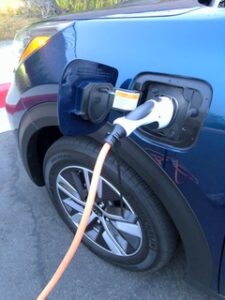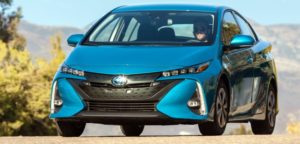Diffusing Disinformation on PHEVs
The rise of battery-electric vehicles (BEVs) have fans professing its technological wonders, while looking down at plug-in hybrid EVs (PHEVs). The major difference? While BEVs use a battery-powered motor to power the vehicle, PHEVs have both a battery/electric motor and a gas engine to power them. With that said, this has led to the debate of which ones are better: BEVs or PHEVs. However, misinformation has also been circulated against PHEVs.
But not to worry!
In this article, we’ll dispel five common myths on PHEVs that BEV-only fans may want you to believe. To which we say–DON’T.
-
PHEV Owners Not Charging Them = Not Being Green
First of all, not true!

PHEVs have two forms of “fuel” for a reason. PHEVs allow drivers to use their vehicles for either long or short trips, and not have to worry about finding a charging station. Even if PHEV drivers does fill up at the pump, that doesn’t necessarily mean that they’re neglecting the battery part of their vehicles since the default mode when the battery is depleted is hybrid drive that continues to optimize for efficiency by blending the electric motor and gas engine.
-
PHEVs Are No Longer Viable Once Batteries And Charge Rates Improve
Batteries in vehicles will always be batteries. If they happen to improve, so will PHEVs. Even with the racket of fossil fuels being used for gasoline, PHEVs make it so less gas is being pumped from the earth, since these vehicles use gas in addition to batteries.
-
Worn-Out EV Batteries Make PHEVs Useless!
Wrong, wrong, wrong!
Car batteries never reach full depletion–not even in PHEVs. All types of modern hybrids can reserve battery power. According to TrueCar, EV batteries are expected to last 10 years before needing to be replaced—roughly the life of the car.
-
PHEV Problems Are Equivalent To ICE Vehicles’

ICE refers to “internal combustion engine.” In other words, ICE refers to the old-school vehicles that BEV fans call “gas guzzlers.” BEV fans will also cite high maintenance and repair costs that supposedly come along with ICE vehicles. Not surprisingly, they cite these problems with PHEVs as well.
However, such fanatics can be more far from the truth!
Modern PHEVs and BEVs are subject to maintenance and repairs at any time. No matter which vehicle you decide to invest in, you’ll still need to be on the lookout for any repairs that can happen at any time–much like what you would do with a traditional gas-fueled car. According to Consumer Reports, PHEV batteries have great reliability because of their durability, despite their priciness.
-
PHEVs Are 100% Guilty Of Causing Pollution
Finally, this is the big topic: pollution. Many environmentalists know about it, and so do BEV fans.
However, PHEVs have made compromises when it comes to fuel. By being fueled by both gas and battery, they sacrifice half or more of their need for gasoline, which can give the environment a sigh of relief. In fact, places like California, according to the California Air Resources Board (CARB), are already promoting PHEVs as part of its drive to have only zero-emission new vehicles (ZEVs) on sale by the year 2035.
Plus, organizations like the United States Environmental Protection Agency (EPA) have the final say when evaluating how vehicles’ sources of fuels are impacting the environment. If a vehicle is deemed “environmentally harmful,” then the EPA will step in to put their foot down. So far, PHEVs haven’t been given the boot by the EPA just yet.
Conclusion

As you can see, PHEVs aren’t as obsolete, environmentally dangerous or useless as some BEV fans will get you to believe. In fact, these five myths stem from first impressions and bias.
Therefore, whether you opt for a PHEV or a BEV is ultimately up to you. Don’t let anyone persuade you otherwise.
By learning the truth about these five myths–despite there being more myths than that–you’ll feel more comfortable about PHEVs. Even if you’re concerned about the environment, you’ll be glad to know that PHEVs aren’t as harmful as some might say.
We hope that our myth-busting has made you more confident in your next car purchase. If you’re in the mood for investing in a PHEV, go for it!
Emily Henry is a writer at Write My Essay and Bigassignments. She is also a contributing editor at EssayWriting Services. As a content writer, Emily writes about cars, gas economies, and transportation. In her spare time, she rides her motorcycle to parks, beaches and ranches.
Some PHEVs Clean Fleet Report has tested
Road Test: 2021 Kia Niro PHEV
Road Test: 2021 Chrysler Pacifica PHEV
Road Test: 2021 Volvo XC90 PHEV
Road Test: BMW Middle Road PHEVs
